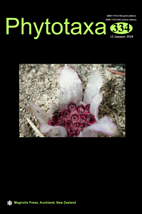Abstract
This work reports the identification of Trachelomonas saccasii in a small mesotrophic pond in the Czech Republic. Trachelomonas saccasii was originally described from a small lake in Ivory Coast (West Africa) in 2009. This report from the Czech Republic is the second known record of this taxon after the initial description of this species. Trachelomonas saccasii represents a new species of euglenoid for the Czech Republic and Europe. This finding highlights the current knowledge gaps regarding the biogeography and worldwide distribution of euglenoids. The first aim of this study is to describe the identification of Trachelomonas saccasii using light and scanning electron microscopy and to compare it with the description of the original material from Africa. Second, we discuss the current knowledge of euglenophyte biogeography and propose methods that could be used to explore biogeographical distributions using floristic databases. These methods could be useful especially for the following flagship species: Colacium epiphyticum, C. minimum, Lepocinclis crassicollis, Phacus plicatus, Trachelomonas argentinensis, T. hemispherica and T. magdaleniana. This study provides new data on the global distribution of euglenoids and proposes possible strategies to obtain further information about the global distribution of this group of microorganisms.

